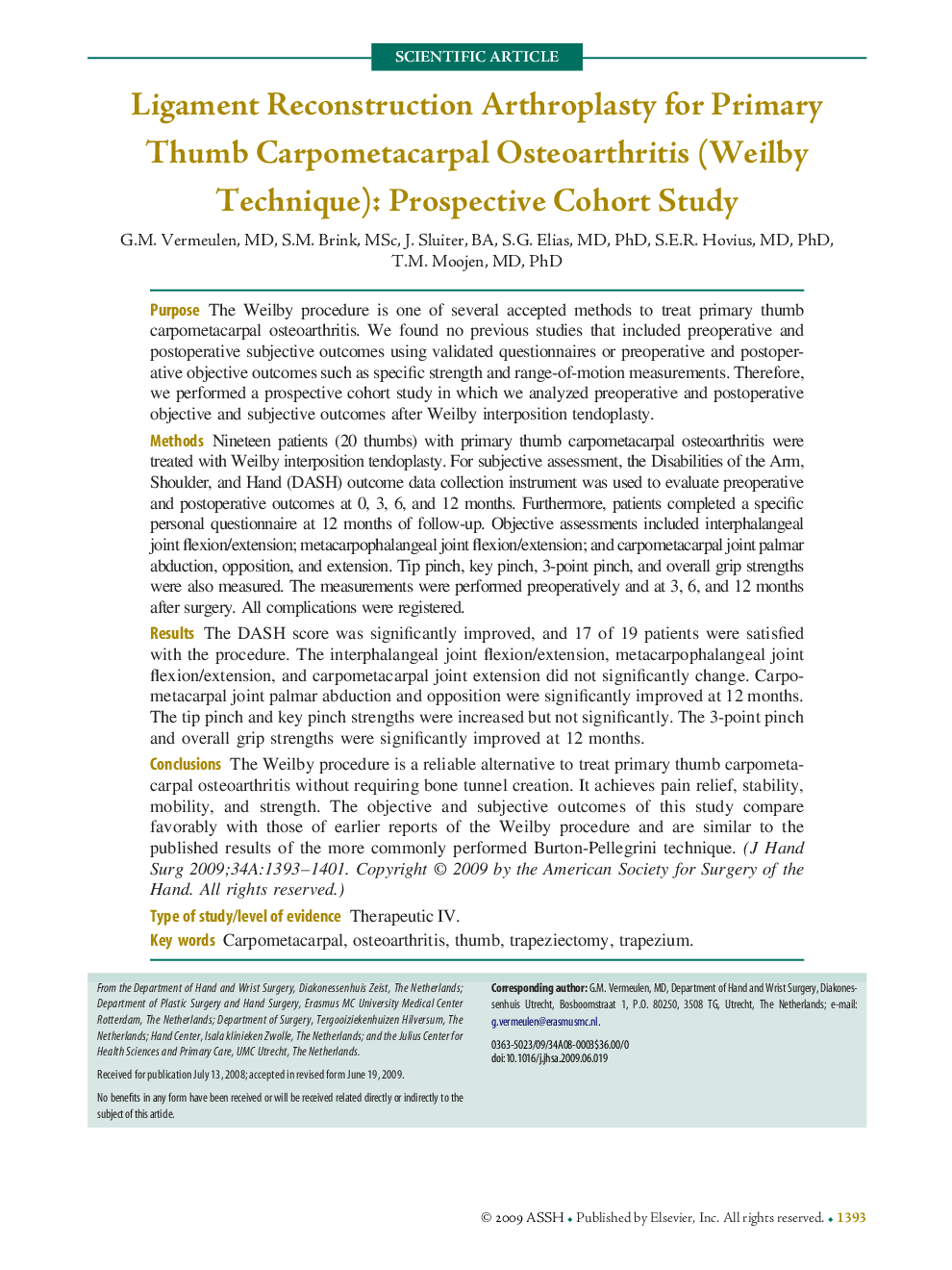| Article ID | Journal | Published Year | Pages | File Type |
|---|---|---|---|---|
| 4071319 | The Journal of Hand Surgery | 2009 | 9 Pages |
PurposeThe Weilby procedure is one of several accepted methods to treat primary thumb carpometacarpal osteoarthritis. We found no previous studies that included preoperative and postoperative subjective outcomes using validated questionnaires or preoperative and postoperative objective outcomes such as specific strength and range-of-motion measurements. Therefore, we performed a prospective cohort study in which we analyzed preoperative and postoperative objective and subjective outcomes after Weilby interposition tendoplasty.MethodsNineteen patients (20 thumbs) with primary thumb carpometacarpal osteoarthritis were treated with Weilby interposition tendoplasty. For subjective assessment, the Disabilities of the Arm, Shoulder, and Hand (DASH) outcome data collection instrument was used to evaluate preoperative and postoperative outcomes at 0, 3, 6, and 12 months. Furthermore, patients completed a specific personal questionnaire at 12 months of follow-up. Objective assessments included interphalangeal joint flexion/extension; metacarpophalangeal joint flexion/extension; and carpometacarpal joint palmar abduction, opposition, and extension. Tip pinch, key pinch, 3-point pinch, and overall grip strengths were also measured. The measurements were performed preoperatively and at 3, 6, and 12 months after surgery. All complications were registered.ResultsThe DASH score was significantly improved, and 17 of 19 patients were satisfied with the procedure. The interphalangeal joint flexion/extension, metacarpophalangeal joint flexion/extension, and carpometacarpal joint extension did not significantly change. Carpometacarpal joint palmar abduction and opposition were significantly improved at 12 months. The tip pinch and key pinch strengths were increased but not significantly. The 3-point pinch and overall grip strengths were significantly improved at 12 months.ConclusionsThe Weilby procedure is a reliable alternative to treat primary thumb carpometacarpal osteoarthritis without requiring bone tunnel creation. It achieves pain relief, stability, mobility, and strength. The objective and subjective outcomes of this study compare favorably with those of earlier reports of the Weilby procedure and are similar to the published results of the more commonly performed Burton-Pellegrini technique.Type of study/level of evidenceTherapeutic IV.
